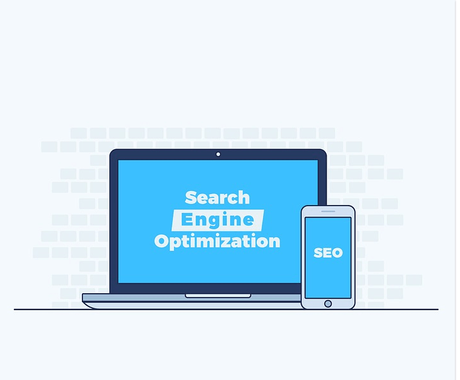Creating an app is just the beginning, building it and making it successful is what takes it ahead. What is the next step that you need to take? What do you do to make it popular or to make more and more people aware of it? The next step is to focus on App Store Optimisation (ASO) and Search Engine Optimisation (SEO). Along with websites on Search Engine Results Pages (SERPs), apps also crop up with the install button. That's how Google has made everything mobile-friendly - about one-fourth of people discover apps on search engines like Google, one of the reasons why app developers should be focusing on SEO for an app.
Besides that, no app is unique today. There must be several apps that primarily or not do the same thing. Most of us don't feel comfortable choosing a new app over an old and reputed one. So, in order to stand out from all the other similar apps, you got to be working on the SEO of your app.
Boost App Visibility With the Best SEO Tips 2019:
What is SEO?
SEO is nothing but the process of getting traffic on your web page ( Learn more from the hackr.io) from the search results on search engines. It is free or organic, unlike paid search ads. All the major search engines like Google and Yahoo have search results that are ranked and shown on the basis of the search keywords.

Apart from ASO, mobile app marketing through SEO plays an important role. Many confuse the two with each other and its significance over the other. While both are equally valuable for an app to market itself better, SEO works on search engines and ASO works only on App stores like Google Play (for Androids) and App Store (for iOS). In addition, SEO pushes a customer to visit the app store and ASO convinces the customer to install the app.
While the 'Why' of the importance of SEO for App has almost clear, let's move on to the 'How'.
How to improve app visibility on mobile web search
Although ASO and SEO are different while we are on app visibility, both of them have to work simultaneously - both are targeted at driving traffic through search queries.

Marketers believe App stores are the places where consumers discover apps that they are looking for. This is however only true to some extent. With the advent of search engines and the growing number of mobile usage, mobile web search has become one of the easiest sources of app discovery. It is common that one just puts up a category on search, and all the relevant apps appear to solve the consumer's problem. On mobile web search, an app can be discovered in:
Each app in the app pack comes with its name, icon, rating, and price (if the app is not for free), along with an expansion arrow which, when clicked, shows you more relevant apps (if there are any).
- App-specific query/App pack- You must have seen a pack of apps being displayed after a web search. Now, what are these - these are just a group of relevant apps that go best with the search keyword.
These apps are operating system and device-specific and they are directly linked to the Google Play and Apple App Stores.
App packs come up mostly when a game or task-related keywords are on the search- for example - "puzzle games" or "task planner", etc.
They are not quite different from that of ASO. Keywords don't really matter here as Google uses its own algorithm to rank an app. But, an app that's ranking well on app stores is likely to work well on the mobile web search.
The ranking factors for App Pack:On-page: URL, Title / App Name, short description and description
Off-page: User ratings/reviews, installs, and page authority/backlinks
*Depends on the OS
A single snippet is the common search result of an app. It includes the name of the app, the rating, and a small description. Coupled with that, comes the install button. However, the app search results on Android and iOS are slightly different.
What organic search results mean is when a mobile user searches a specific brand name/or the particular name of your app- your app emerges on the SERP.

This is mostly a single snippet of your app at the top with the name, rating, icon and a little bit of the description, with the install button with redirects to the Google Play store.
App indexing is not new. Earlier it used to show only the apps that are installed on one's phone but today it shows new apps as well. App indexing is nothing but deep links within your app - this helps the Googlebot to index the context and lets a user go directly to the app content from within the Google search results. This is for your old users as well as new users. If a consumer has your app installed on his phone and searches something relevant to the app, the SERP shows all the app content. This way you bring your user back to your app or re-engage him.
For new users, is the keyword search is relevant to your app, the search engine offers the install your app.
The way keywords work for ASO and SEO are similar. Basically, what you need to do is concentrate on the keywords that drive the most traffic and of course which are relevant to your app the most.
Invest your time in keyword research. And while you are on that, don't stuff your app description with the same keyword again and again - Google may lower your rank for that. And, is, in fact, one of the reasons why even some popular apps have a lower rank.
- Title: Most importantly, the title of the app should be catchy enough because it is the first thing that the user sees. Keywords placed in the title are important for search algorithms on the app store. So, find the most-searched keyword - invest more time in it.
- Keywords:
Use Latent Semantic Indexing to boost your SEO - It's always better to tell Google what your keywords and the content inside mean and if they are the same concepts or not.
Be careful when you find keywords and the suggested ones, always choose the ones with low competition.
Feedback is the key to the success of anything. Not only would good user ratings and reviews encourage more users to download your app, but they would also help in ranking higher than other similar apps.

Encourage your users to leave positive reviews on the app - this way, search engines crawl these reviews for keywords, which makes your app visible. Not to mention that users often look at the rating before downloading any app.
When we are talking of backlinks, they should preferably be good and of high-quality. High-quality backlinks get your app a higher Google rank.

Just the way, boosting your brand new page on social media requires you to collaborate with influencers, apps need quality backlinks too. Get other websites/media to talk about your app. Put the link to your download page on your website (in the header, most preferably).
For Android, add your app to the Google Search Console and analyze the SEO performance of your app.
- domain ranking (Apple and Google)
- find a number of distinct referring domains
- number of organic keywords that work the best
Also Search:
- View impressions
- Analyze click-through rates on search results
- Find the keywords that drive traffic on Google Play Console
- Track backlinks with ahrefs - find the URL rating of your app
Conclusion: Boost App Visibility With the Best SEO Tips 2019
By now, you have got the idea, that an app can get the highest rank with SEO. It is, in fact, one of the most necessary factors that play the whole app game.
SEO for an app could be similar to that for websites although the rules and algorithms are to some degree different. The common belief that consumers only discover apps on app stores is not true. A lot of people go to search for apps on SERPs.
A majority of app developers are not really investing in ASO and SEO and this often leads to low ranking of their apps. Ultimately, it is the search that makes your app popular, keeping aside other factors. Improve your online visibility with the proper App and Web Development.
As stated above, single snippet, keywords, app packs, the title of the app, backlinks are the key SEO factors that keep your app going and further promote it. In addition, the name of the app is relatively important. It is at all times better to give your app a single word name- shorter names fit better on phone screens.


